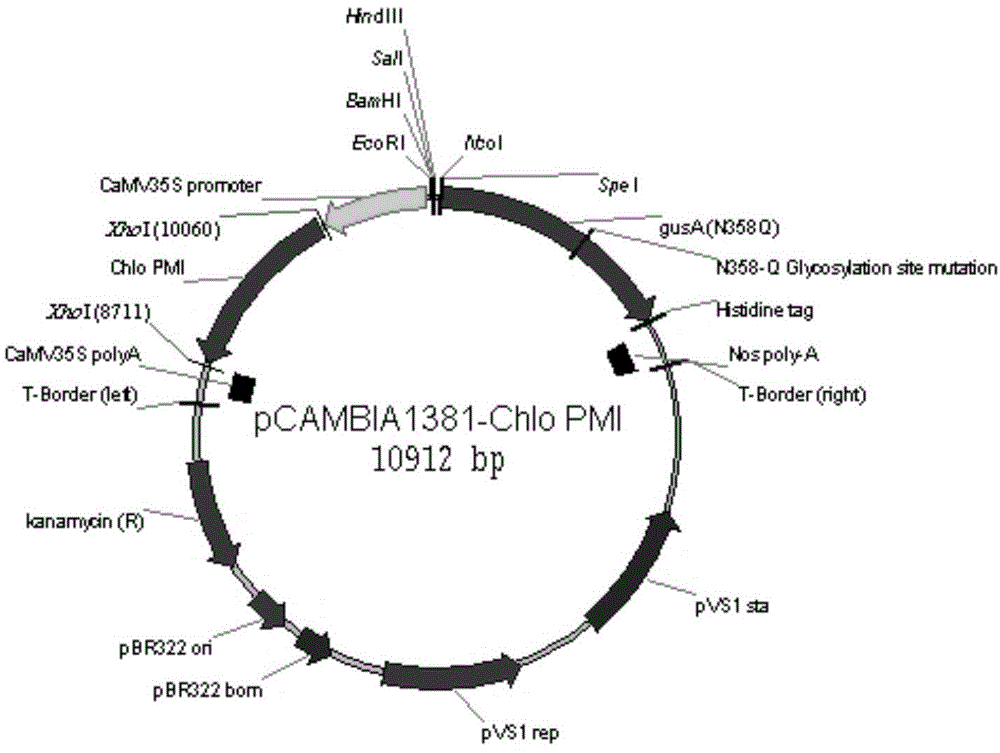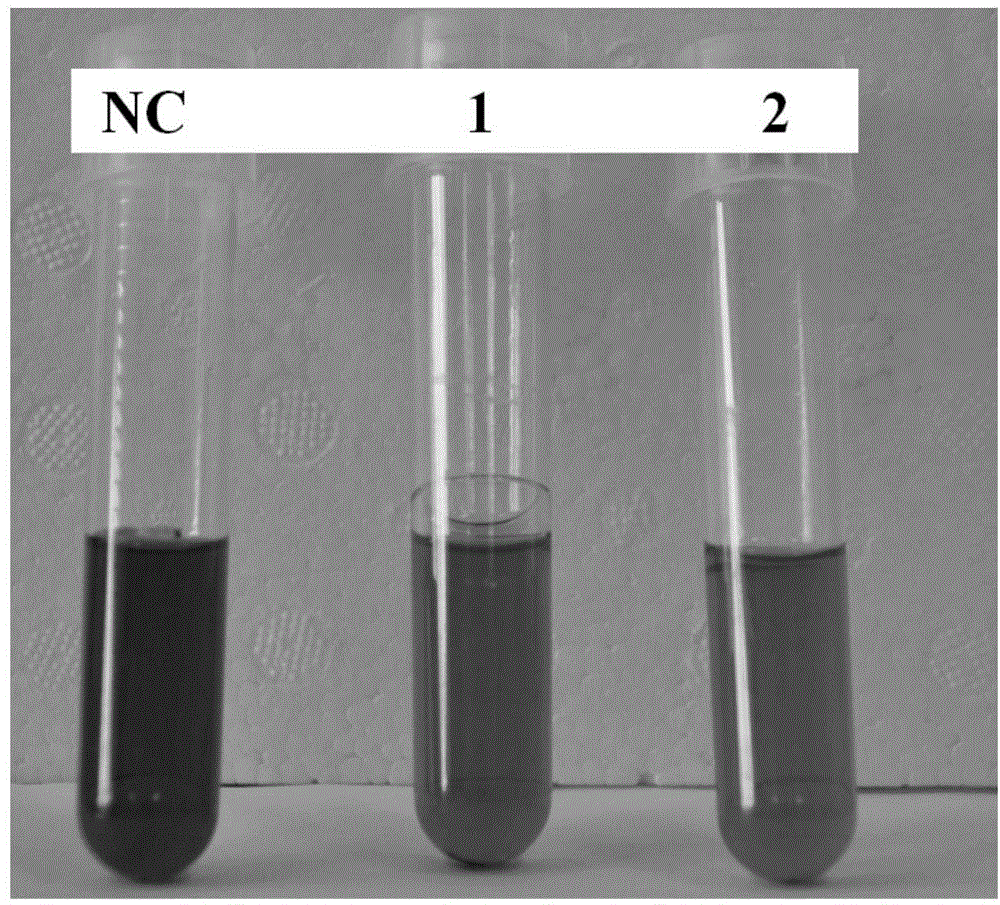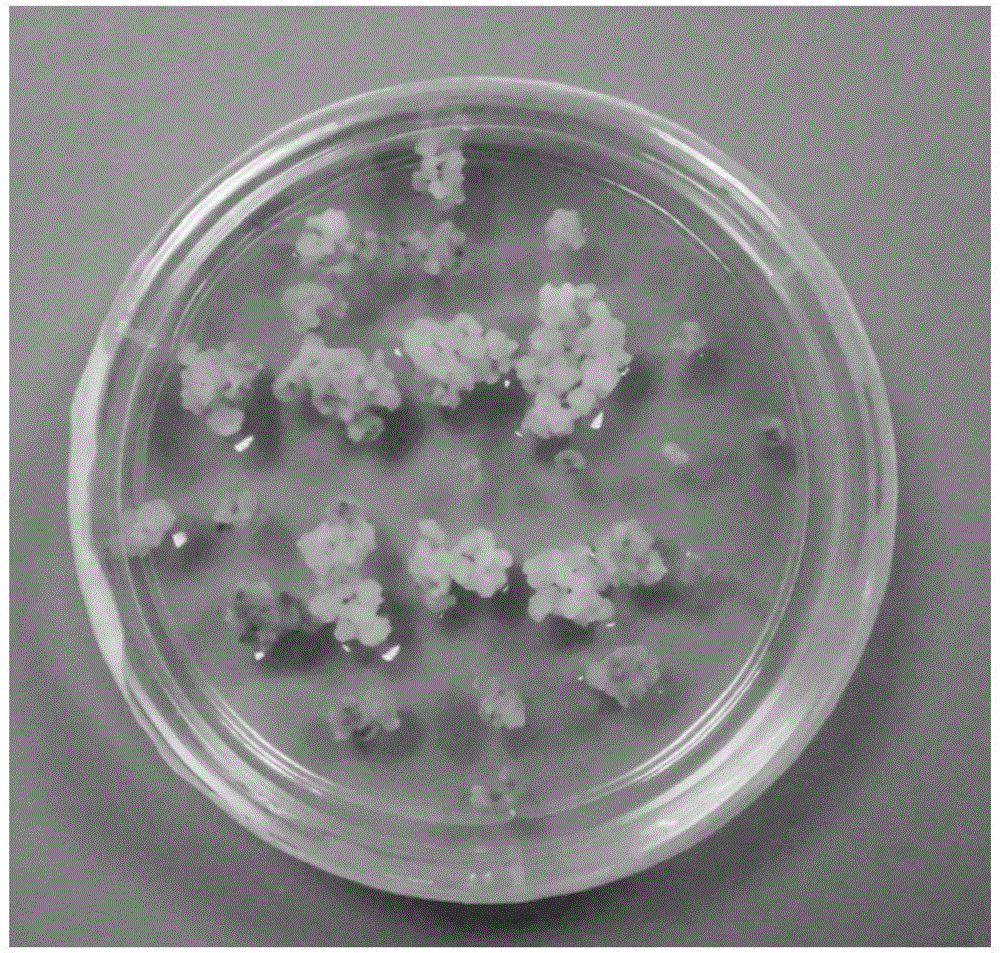Phosphomannose isomerase from chlorella variabilis and application thereof
A technology of mannose phosphate and isomerase, which is applied in the field of biotechnology and plant genetic engineering, can solve problems such as safety concerns and adverse effects of transformed receptor genomes, and achieve the effect of eliminating safety concerns and solving potential threats
- Summary
- Abstract
- Description
- Claims
- Application Information
AI Technical Summary
Problems solved by technology
Method used
Image
Examples
Embodiment 1
[0038] Embodiment 1 - the acquisition and cloning of ChloPMI gene
[0039] The sequence is based on the bacterial phosphomannose isomerase protein sequence, compared with the homologous sequence in the mannose-utilizing Chlorella genome sequence (genome.jgi-psf.org), and the highest homology is obtained. is the ChloPMI protein sequence. The bacterial phosphomannose isomerase protein sequence is as follows:
[0040] MQKLINSVQNYAWGSKTALTELYGMENPSSQPMAELWMGAHPKSSSEVQNAAGDIVSLRDVIESDKSTLLGEAVAKRFGELPFLFKVLCAAQPLSIQVHPNKHNSEIGFAKENAAGIPMDAAERNYKDPNHKPELVFALTPFLAMNAFREFSEIVSLLQPVAGAHPAIAHFLQQPDAERLSELFASLLNMQGEEKSRALAILKSALDSQQGEPWQTIRLISEFYPEDSGLFSPLLLNVVKLNPGEAMFLFAETPHAYLQGVALEVMANSDNVLRAGLTPKYIDIPELVANVKFEAKPANQLLTQPVKQGAELDFPIPVDDFAFSLHDLSDKETTISQQSAAILFCVEGDATLWKGSQQLQLKPGESAFIAANESPVTVKGHGRLARVYNKL
[0041] Then, the RNA of Chlorella variabilis was extracted and reverse-transcribed into cDNA; according to the CDS (coding sequence) sequence of ChloPMI, gene-specific cloning p...
Embodiment 2
[0043] Embodiment 2——The construction of the prokaryotic expression vector of ChloPMI gene
[0044] By designing ChloPMI prokaryotic expression primers, the forward primer 5'- GGATCC ATGGCTGGAACGGCGACAGAGA-3' (the underline is the BamHI restriction site), reverse primer 5'- CTCGAG CTCAAAGGCCATTCCGTTG-3' (the underline is the XhoI restriction site), using the PGEM-T-ChloPMI recombinant plasmid as a template, carry out PCR amplification, recover the target fragment amplified by PCR and digest pGEX-6P-1 with BamHI and XhoI for expression The vector (purchased from GE) was ligated to obtain a prokaryotic expression vector pGEX-ChloPMI fused with a GST (glutathione-S-transferase) fragment, and transformed into Escherichia coli expression strain BL21. At the same time, pGEX-6P-1 empty vector and pGEX-PMI containing Escherichia coli phosphomannose isomerase expression vector were also transferred into Escherichia coli expression strain BL21.
Embodiment 3
[0045] Embodiment 3——ChloPMI activity analysis
[0046] Line the BL21 bacterial strain containing the prokaryotic expression vectors pGEX-ChloPMI, pGEX-PMI and pGEX-6P-1 empty vector, pick a single clone and inoculate the LB liquid medium (see Table 1 for the Agrobacterium culture medium without adding agar), Shake culture at 37°C overnight (200r / min). The next day, centrifuge at 6000r / min for 1min at room temperature, discard the supernatant, and resuspend the pellet with a small amount of sterile water. Take the resuspension and inoculate it into sterile phenol red chromogenic medium (1% peptone, 0.5% sodium chloride, 50mg / L phenol red, 30% mannose, pH 7.4) at a ratio of 1:50, and culture with shaking at 37°C ( 200r / min), observe the color change of the medium after 48h. If the strain has the ability to metabolize mannose, the medium will be acidified, the pH value will drop, and the color of the medium will gradually change from red at pH 7.4 to yellow. For the results o...
PUM
 Login to View More
Login to View More Abstract
Description
Claims
Application Information
 Login to View More
Login to View More - R&D
- Intellectual Property
- Life Sciences
- Materials
- Tech Scout
- Unparalleled Data Quality
- Higher Quality Content
- 60% Fewer Hallucinations
Browse by: Latest US Patents, China's latest patents, Technical Efficacy Thesaurus, Application Domain, Technology Topic, Popular Technical Reports.
© 2025 PatSnap. All rights reserved.Legal|Privacy policy|Modern Slavery Act Transparency Statement|Sitemap|About US| Contact US: help@patsnap.com



